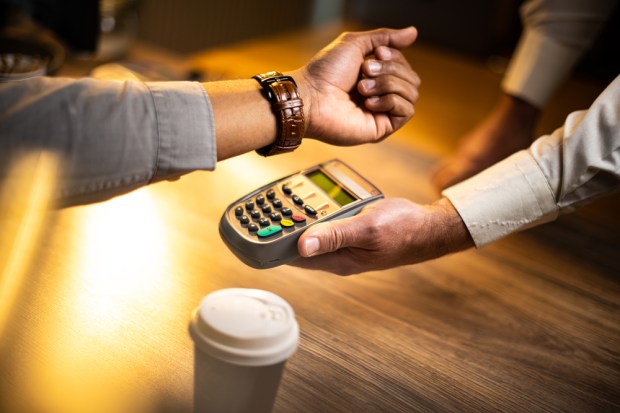Wearables, Mobile Wallets Are Dream Combination for French Merchants

PYMNTS recently studied the digital transformation of 11 countries, discovering that France is a growth leader among the countries examined. Consumers in France are 10% more digitally engaged than one year ago, but growth is even higher in some categories, such as travel, eating, well-being or working. This growth means that local consumers regularly perform more key life activities with digital tools — a phenomenon we call digital engagement.
Proprietary research prepared for the PYMNTS’ May “How the World Does Digital” showed two interesting trends. First, mobile wallet usage for in-store purchases in France rose 15% in Q1 2023, with 12% of consumers using the method for their most recent purchases. Alternatively, using card-based methods for the last purchase decreased by more than 5%. These trends illustrate that French consumers are increasingly more comfortable turning to digital payments, even for in-store purchases.
Free? Of course.
You've uncovered one of our premium articles. Register to keep reading and receive free unlimited access to all our premium content.
The second trend is the level of engagement for specific activities that are seemingly non-transactional, particularly the rise of wearables.
Wearables use in France is up 24% year over year. Although it is not clear which types of wearables consumers use the most, popular products include smartwatches, activity trackers, glasses, hearables and jewelry. However, the increasing adoption in France of these devices could prove transactional in today’s ConnectedEconomy™, driving mobile wallet use even further. After all, paying through a smartwatch rather than a phone may be more convenient in some cases, such as when picking up an impromptu cup of coffee or drink while out on a jog.
As more consumers integrate wearables into their daily lives, future development in this space may easily be imagined, especially as mobile wallet adoption rises. Some designers have already begun experimenting with making wearables fashionable, including the payments-enabled jewelry brand AdornPay. The firm partnered with EU-based wearable payments tech firm DIGISEQ to help bring stylish, embedded payments to the continent.
Wearables have experienced a remarkable adoption increase in France this year. The existence of companies and partnerships focused on the fashionable end of wearables suggests that this market may continue growing. With the rise in mobile wallet usage and digital payments in general, the proliferation of wearables may allow merchants an opportunity to improve payment capabilities and appeal to the growing base of digitally engaged consumers.